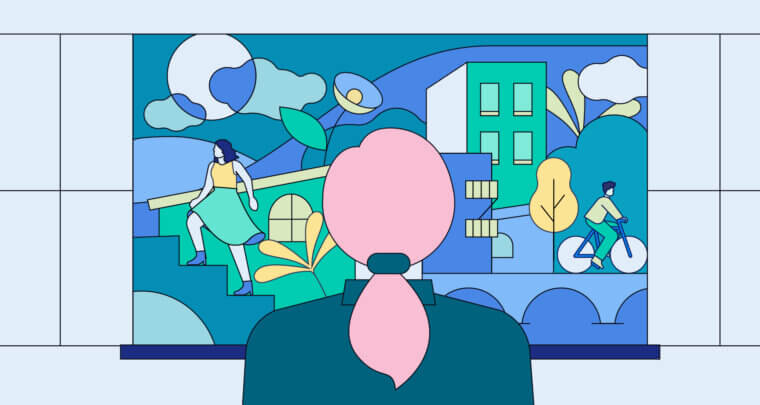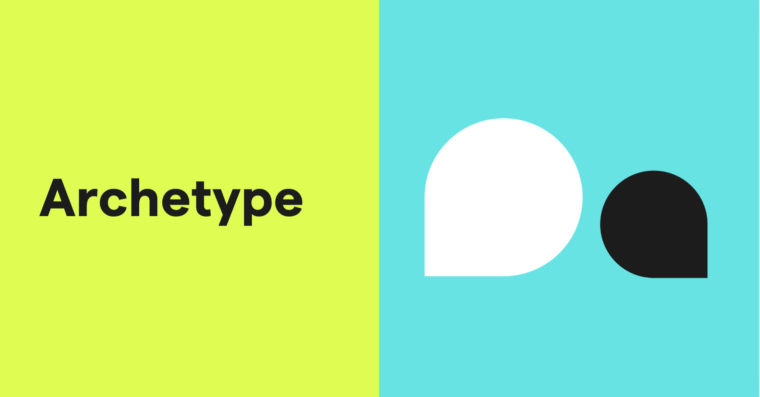
Every piece of writing has a point of view. A novel, an academic research paper, your journal, and this blog post all have a point of view. Point of view in writing is the position from which a story is told. A simple way to think about point of view is to ask: Where is the narrator?
What is point of view?
Point of view is the writer’s way of deciding who is telling the story to whom. Establishing a clear point of view is important because it dictates how your reader interprets characters, events, and other important details. There are three kinds of point of view: first person, second person, and third person.
First-person point of view
In first-person point of view, the reader accesses the story through one person. It’s like reading the main character’s diary. You will notice pronouns like I, me/my, we, us, or our in first-person writing. This limits the scope of what a reader can know about other characters, but it is truest to how we live our lives.
There are two ways to write in first person:
- First-person central: The narrator is also the protagonist of the story. For example, in To Kill a Mockingbird, Scout is both the main character and the narrator, meaning this novel is written in first-person central.
- First-person peripheral: The narrator is telling the story of the protagonist from close by. One famous example is F. Scott Fitzgerald’s The Great Gatsby. The story of Gatsby is told not by Gatsby himself but by a narrator named Nick, a friend and neighbor of Gatsby’s.
Why write in first person?
- Identification: The reader is discovering information right alongside the narrator, so they identify more closely with them. First-person writing creates a feeling of “we’re in this together.”
- Opinion: If your piece is heavily dependent on opinions, then it’s a good idea to establish whose opinion it is. This can be the fictional opinion of a character or the opinion of the writer. Either way, using the pronoun I ensures the opinion won’t be read as fact.
- Intrigue: The limits of a character’s knowledge can play to the advantage of the writer if you want to create mystery around other characters. For example, the narrator’s distance from the subject in The Great Gatsby creates a sense of intrigue about Gatsby.
Second-person point of view
Second-person point of view uses the pronoun you. This point of view establishes the reader as the protagonist or main character. It is the most difficult point of view to maintain in a longer piece of creative writing. As a writer, you want your reader to be engrossed, engaged, and enthralled but . . . involved? There is a time and place for second person, such as nonfiction, advertising, immersive stories, and this blog post. There are some examples of second-person point of view in novels, which we’ll explore later in this article. Just know that it’s the most challenging and least-often-used point of view in fiction.
Why write in second person?
- Uniqueness: It’s unusual to find the second-person point of view in creative writing. Write in second person for a creative challenge or to create a novel experience for your reader.
- Space for reflection: By inserting the pronoun you into writing, you’re addressing the reader directly. This is a useful way to generate space for their personal contemplation.
Third-person point of view
In third-person point of view, the narrator has the ability to know everything. You’ll see the pronouns he/his, she/her, they/them/their, and it/its in third-person point of view. This point of view allows for the greatest flexibility and also creates the most complexity.
There are three ways to write in the third person:
- Third-person omniscient: The narrator speaks freely about everyone and everything. There are no limits to the time, space, or character the narrator can access.
- Third-person limited omniscient (also called third-person close): The author writes in third person but keeps the thoughts and feelings limited to one central character. The Harry Potter series is an example of third-person limited omniscient. The reader has access to scenes across time and space, but they are only ever in the head of Harry himself.
- Third-person objective: The narrator is a neutral entity, relying on observations of characters rather than getting in their heads. It’s writing from a fly-on-the-wall perspective. Ernest Hemingway was a master of third-person objective. Hemingway’s short story “Hills Like White Elephants” is the most popular example of this rare style in fiction.
Why write in third person?
- Complexity: The possibilities are endless in third-person writing. The writer is not limited by the thoughts, observations, or movements of a single character, which gives them the opportunity to build more complex worlds, plots, and characters.
- Flexibility: Third-person narration is not bordered by time or space, so the writer can move the story wherever they want to.
- Authoritative narrator: Human beings are inherently biased, so removing the narrator’s subjectivity can make the writing feel more authoritative.
How to create point of view
If you’ve always written your journal in first-person central, you’ve probably never stopped and asked yourself, Should I write this entry in first-person central? Your choice is instinctual. More often than not, the correct point of view is the one that comes most naturally. However, if you want to be more deliberate with your point of view or try a new technique, here are some things to consider:
1 Look at the genre: Are there any established points of view for the type of writing you’re doing? Read other examples to find out. Personal essays are typically written in first person, self-help books tend to take on second person, and journalism is most often written in third person. Turn to writing that you admire or want to emulate and see if you can determine what point of view it is written in.
2 Think about complexity: First person requires you to have a deep understanding of the narrator, while third person requires knowledge of all of your characters.
3 Establish the point of view immediately: Don’t leave your reader hanging on for too long. A good rule of thumb is to situate your reader within the first two paragraphs.
4 Trust your gut: Like so much in writing, sometimes you just have to feel it out! If you’re unsure whether something sounds better in first or third person, try writing a portion of it both ways. Which one comes more naturally? Which one feels more forced? Often the point of view that feels better to write is the one that feels better to read.
Can you switch the point of view?
Point of view is an unspoken contract between you and your reader, so you should try and stay consistent. Changing points of view without warning would be like suddenly calling your mom by her first name—it’s a jarring experience for everyone. However, you probably wouldn’t call her office and ask to speak to “mom.” There are rare but appropriate situations where changing points of view makes sense.
One instance is when you want to create a moment of reflection for the reader. In this case, you might shift into a second-person point of view. For example, if there is a moral question at the end of an allegory, the writer can switch into the second person and ask what you, the reader, might do in this situation. This is one way you can use points of view as a literary device, which is a strategy to enhance your writing. Some authors, like Haruki Murakami and Italo Calvino, purposefully change the point of view throughout their stories as an imaginative way to enhance the reader’s experience.
Point of view examples
Like we said, every piece of writing has a point of view. Here are some examples of points of view in literature:
First person (peripheral)
“When I came back from the East last autumn I felt that I wanted the world to be in uniform and at a sort of moral attention forever; I wanted no more riotous excursions with privileged glimpses into the human heart. Only Gatsby, the man who gives his name to this book, was exempt from my reaction—Gatsby, who represented everything for which I have an unaffected scorn.”
—The Great Gatsby, by F. Scott Fitzgerald
Fitzgerald’s narrator, the “I” in the example above, is a man named Nick. Though the central character of the book is Gatsby, the reader learns Gatsby’s story through the personal perspective of a nearby narrator.
Second person
“You are about to begin reading Italo Calvino’s new novel, If on a winter’s night a traveler. Relax. Concentrate. Dispel every other thought. Let the world around you fade. Best to close the door; the TV is always on in the next room. Tell the others right away, ‘No, I don’t want to watch TV!’”
—If on a winter’s night a traveler, by Italo Calvino
Calvino was famous for his innovative writing techniques. In this example from the opening lines of his novel, Calvino is directly addressing the reader in second person, instructing them how to read his book.
Third person (objective)
“The American and the girl with him sat at a table in the shade, outside the building. It was very hot and the express from Barcelona would come in forty minutes. It stopped at this junction for two minutes and went on to Madrid.
‘What should we drink?’ the girl asked. She had taken off her hat and put it on the table.
‘It’s pretty hot,’ the man said.
‘Let’s drink beer.’
‘Dos cervezas,’ the man said into the curtain.
‘Big ones?’ a woman asked from the doorway.
‘Yes. Two big ones.’”
—“Hills Like White Elephants,” by Ernest Hemingway
This dialogue is told from a fly-on-the-wall perspective. The narrator is not talking about themself (there is no “I”), and the reader has access to every character’s behaviors equally. It is purely observational.
Point of view FAQs
What is point of view in writing?
Point of view in writing is the position the narrator speaks from. It is who is speaking to whom.
How does point of view work?
Point of view is expressed through the author’s use of pronouns, which reveal the narrator’s position. In first person, the narrator uses the pronoun I throughout the writing. In second person, the narrator uses the pronoun you. In third person, the narrator uses the pronouns she/he/they/it.
What are the different kinds of point of view?
There are three kinds of point of view: first person, second person, and third person.
When should you use point of view in writing?
Every piece of writing has a point of view. Sometimes the point of view is chosen for us by the genre we are writing in. For example, most journalism is required to be written in third person. However, there are different strengths and weaknesses to each point of view, and it is up to the writer to decide which one serves their writing best.






